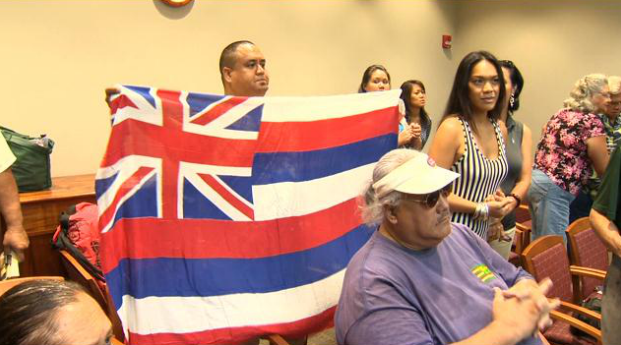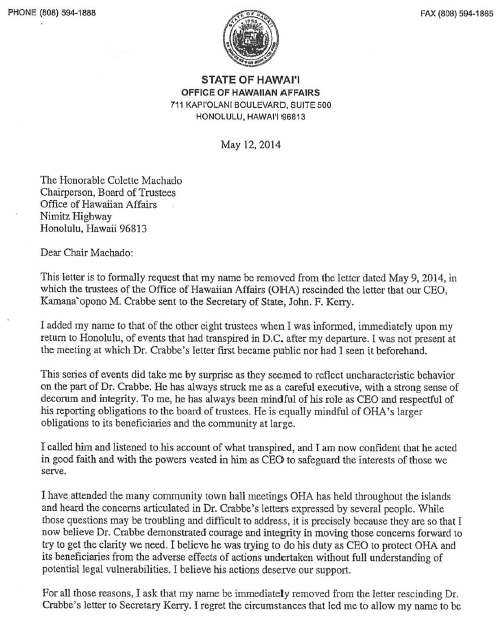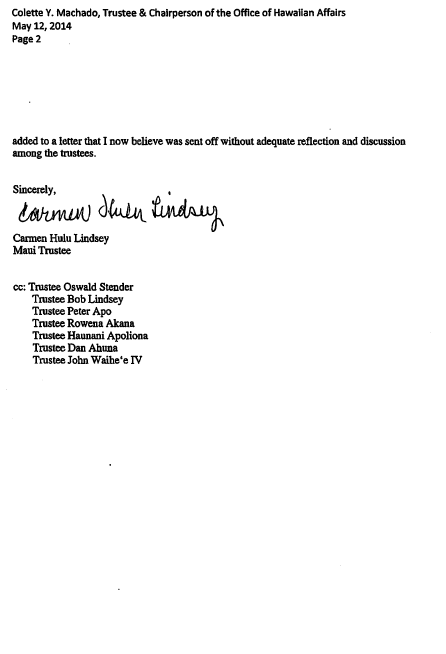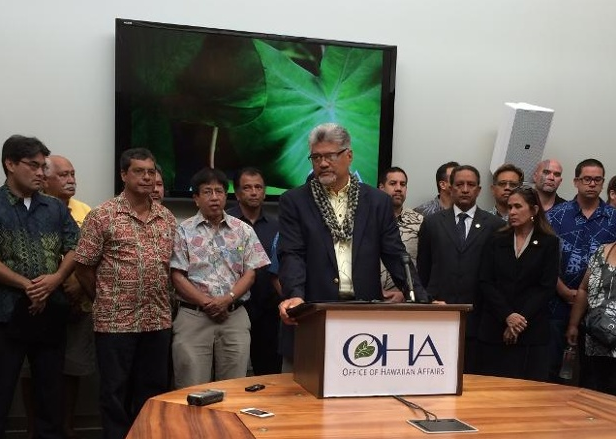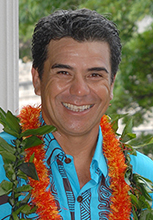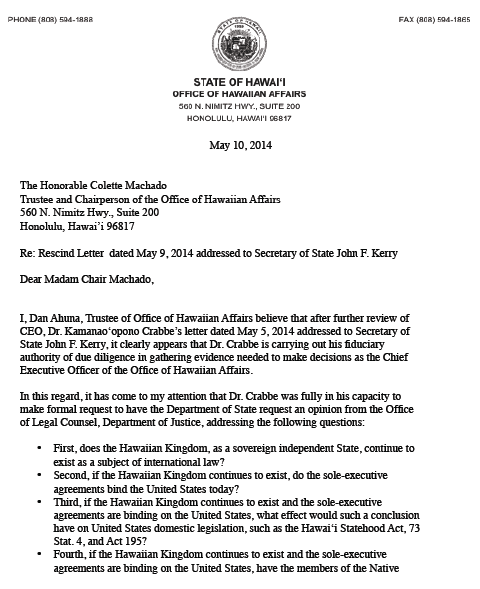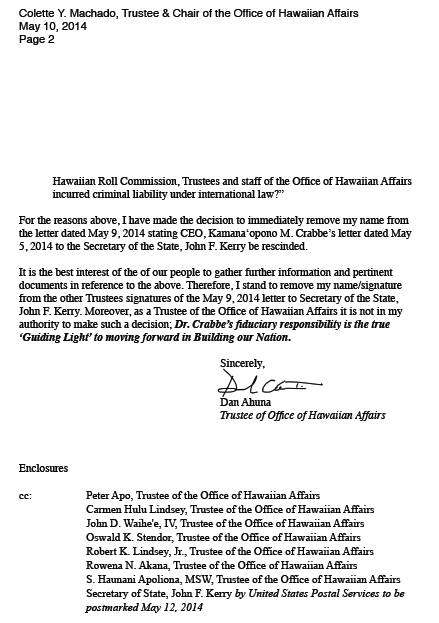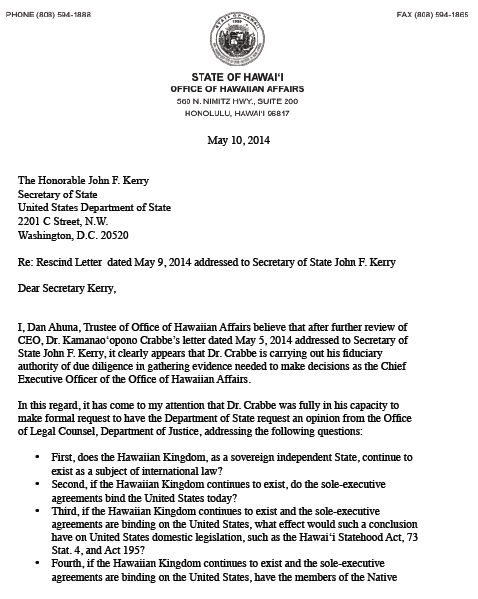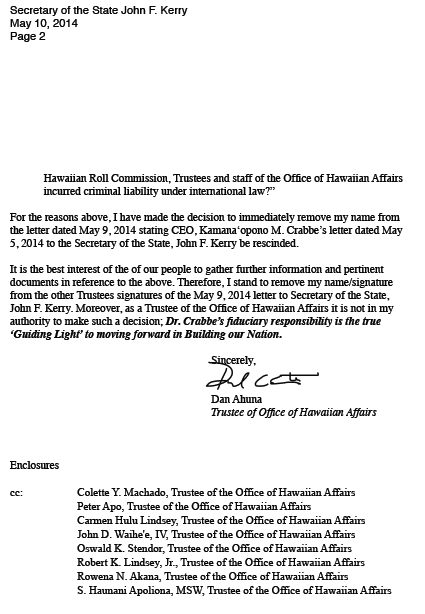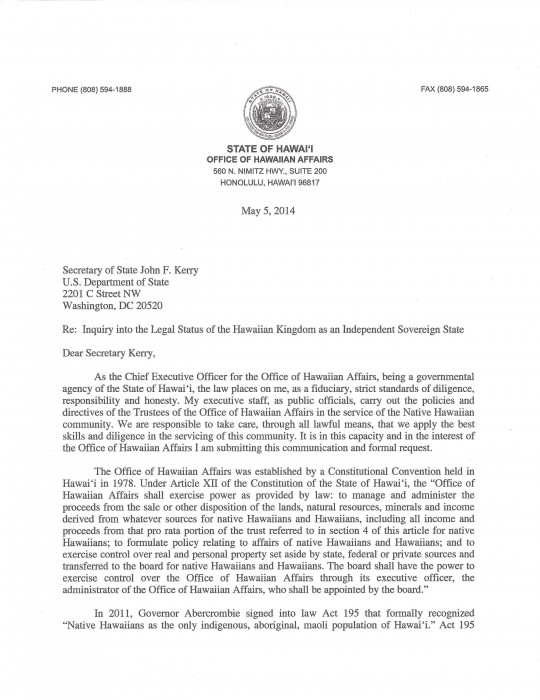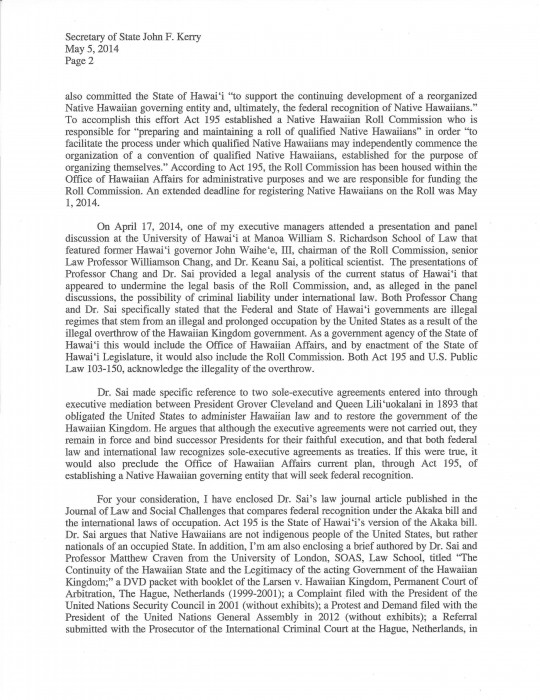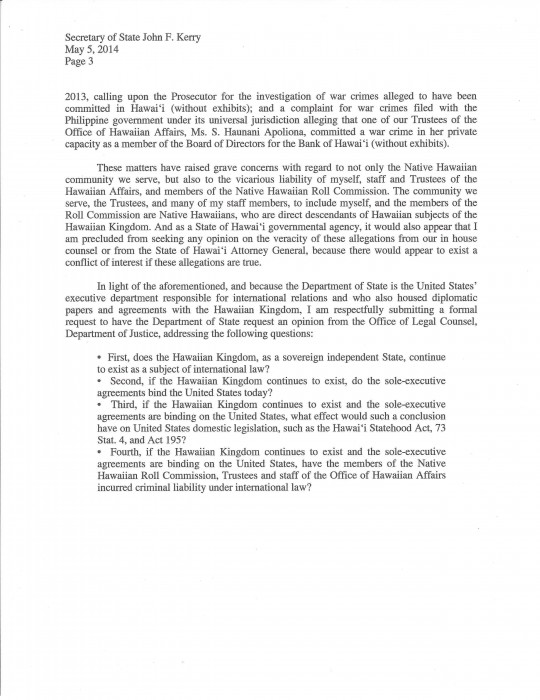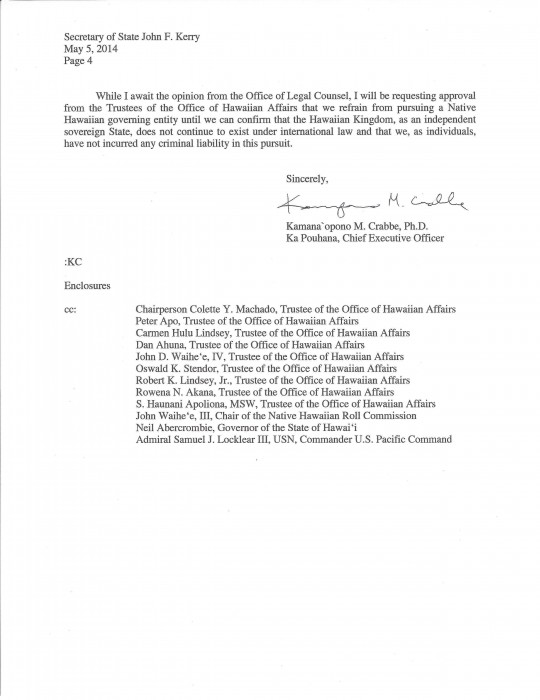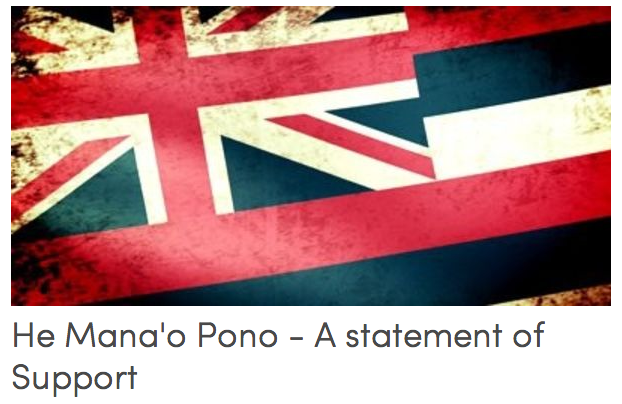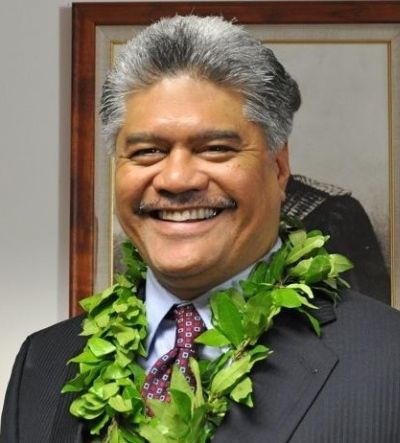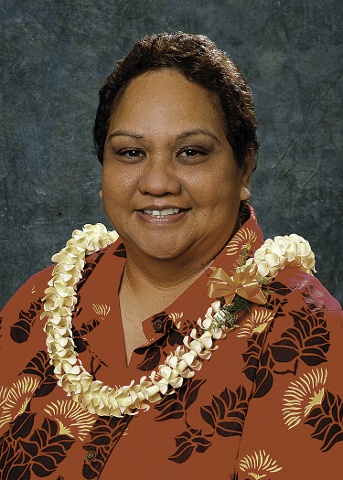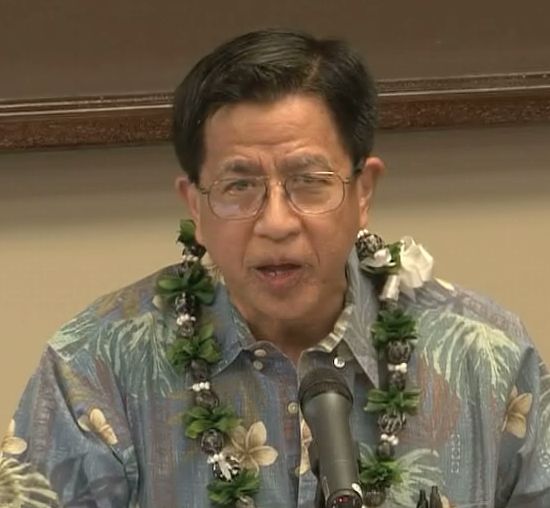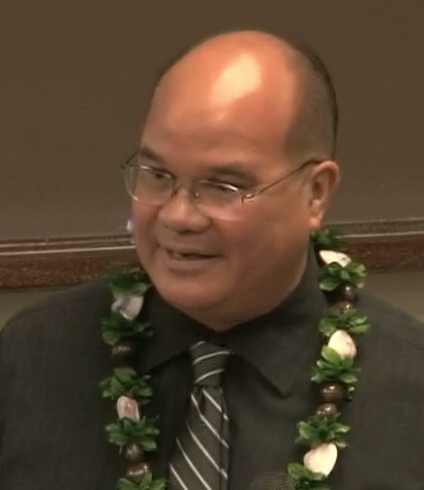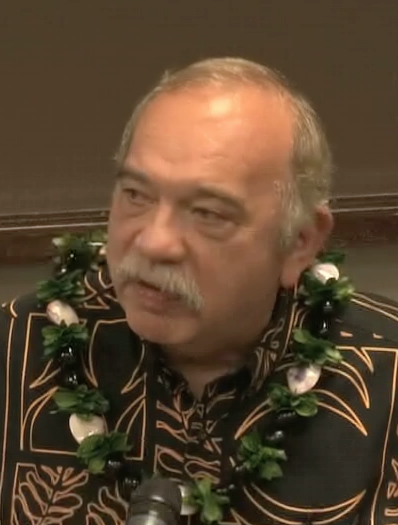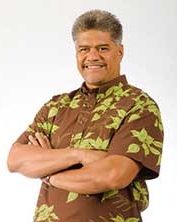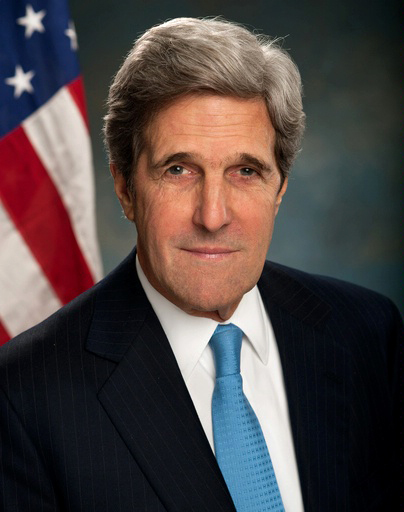Hawaii News Now reports “Hawaiian Affairs CEO moving forward after letter”
HONOLULU (HawaiiNewsNow) – Does the Hawaiian Kingdom still exist? That’s the question the CEO of the Office of Hawaiian Affairs wants answered by the U.S. Justice Department.
His inquiry has sparked an internal dispute within OHA, as several trustees have attempted to rescind the request, but he’s standing by his decision and now a few trustees are switching sides and backing him as well.
Dr. Kamanaʻopono Crabbe addressed the public today for the first time since submitting a formal request to Secretary of State John Kerry seeking clarification on the legal status of the Kingdom of Hawaiʻi.
Flanked by dozens of supporters, Dr. Crabbe held a press conference Monday morning to clarify the intent of his inquiry, which he says was sent within his authority under OHA’s governing documents and Hawai’i statutory law.
He says the chief reason for requesting that Secretary Kerry seek a legal opinion of the U.S. Attorney General regarding the status of Hawai’i under international law is to ensure OHA can effectively facilitate a process of rebuilding a Hawaiian nation. Dr. Crabbe went on to say highly qualified experts have provided their answers to the questions posed, but it would be irresponsible for OHA to assume the United States views the situation similarly.
“My staff and I have held some 30 community meetings in the past two months regarding our proposed process to rebuild our nation. In that same period we also held two governance summits with key community leaders. At these gatherings, and in other virtual contexts, we heard repeatedly concerns about engaging in a process of rebuilding a nation when — following the research of many legal, historical, and political experts — our nation continues to exist in the context of international law,” Dr. Crabbe said.
Dr. Crabbe says he made the inquiry because these claims appear to be valid, but for over 120 years, Native Hawaiians voices and concerns have not been properly answered.
“It is imperative for us to move forward to have at least accurate information and truth so that our people can make well informed decisions,” Dr. Crabbe said.
Among the questions Dr. Crabbe asked in his letter to Secretary Kerry:
“First, does the Kingdom of Hawaiʻi, as a sovereign independent State, continue to exist as a subject of international law?
Second, if the Hawaiian Kingdom continues to exist, do the sole-executive agreements bind the United States today?”
Experts say these are questions that have come up for decades, since the illegal overthrow of the Kingdom of Hawaiʻi in 1893 and since the U.S. government formally apologized for the illegal overthrow in 1993, but supporters say this is the first time the State Department has ever been asked point blank for an answer.
OHA’s CEO says his inquiry is not intended to invalidate the nation-building efforts of Kanaʻiolowalu but to make sure self-determination is achieved legally and with no unanswered questions.
“I can only imagine the burden that our Queen Lili’uokalani faced in 1893, but her charge and her legacy, and most of all, her spirit remains with us today, but most of all we must heed not only her guidance but each other,” Dr. Crabbe said. “For we are all Natives. We are patriots. We are sons and daughters of this great land and as we move forward let not the differences divide us, but let our common beliefs and values and the principals of our kupuna unite us. That is the call I ask from our people, from our trustees and our staff as we move forward in unity,” said Dr. Crabbe.
Only one trustee was present at Monday morning’s press conference, Oswald Stender. Dr. Crabbe addressed the disagreement that exists between himself and OHA’s trustees since they learned of his inquiry, but says he has not been asked to resign or step down from his position as CEO.
“I continue to believe my decision to send the letter was in the best interest of OHA and the beneficiaries we serve,” said Dr. Crabbe. “The Hawaiian community needed to know that I was inquiring about the very matters they sought to bring forward. And this is the reason I felt it was imperative to not only ask the questions but that the community be aware of the inquiry.”
Initially, all nine trustees signed a letter asking Secretary Kerry to rescind Dr. Crabbe’s inquiry, which was sent by OHA Chair Colette Machado Friday afternoon.
However, over the weekend Trustee Dan Ahuna sent another letter to Secretary Kerry — this time, asserting his support for Dr. Crabbe’s initial inquiry.
“It clearly appears that Dr. Crabbe is carrying out his fiduciary authority of due diligence in gathering evidence needed to make decisions as the Chief Executive Officer of the Office of Hawaiian Affairs,” Ahuna wrote. “It is the best interest of our people to gather further information and pertinent documents.”
Immediately following Dr. Crabbe’s press conference Monday morning, Trustee Carmen Hulu Lindsey sent a letter to Chair Machado asking her name be removed from the rescind request.
“I have attended the many community town hall meetings OHA has held throughout the islands and heard the concerns articulated in Dr. Crabbe’s letters expressed by several people. While those questions may be troubling and difficult to address, it is precisely because they are so that I now believe Dr. Crabbe demonstrated courage and integrity in moving those concerns forward to try to get the clarity we need,” Lindsey wrote.
More than 1,200 people have signed He Mana’o Pono, a petition in support of Dr. Crabbe’s State Department request since Saturday.
“Really what we’ve sought in that letter of support is first to honor Dr. Kamana’opono Crabbe and the position that he’s taken and really bringing to the forefront questions that have plagued our community for generations. We’re not committed to any particular answers to those questions or outcome , but we are committed to having those questions asked,” said said Dr. Kamanamaikalani Beamer, a law professor with the University of Hawaiʻi at Manoa. “Hawaiʻi is at a pivotal time. We need facilitative leadership. We need people that are going to bring our communities together and I feel like answers to these questions and clarifications will help and I want to support a leader that listens to our people.”
“Those are important questions — some of which are coming out of the University right now. This is cutting edge research on the legal political history of Hawaiʻi that I think is prompting a new kind of awareness in the community. What you’ve seen the CEO do today is respond to that new awareness — this new curriculum, this new education and research that’s coming out of the university,” said Dr. Willy Kauai, a UH Manoa lecturer in the Ethnic Studies department. “I think what’s paramount in what took place today was kind of a call for education that, ʻEh, if we’re going to go about doing these important things, such as nation-building, we should probably have a very clear understanding of our own history’.”
Hundreds have commented on the petition.
“The truth can only be hidden from the world for so long. People in positions of power and policy making who have a conscience must speak out to the truth and challenge those who continue to perpetuate the lie that Hawaiʻi is a state of the USA. Kamanaʻopono Crabbe is another champion in our history of leaders to step forth and question what is perceived to be the truth. Mahalo nunui e Kamanaʻopono and to all who continue to keep the fire alive!” one supporter wrote.
“As a person of non-Hawaiian ancestry, I stand in solidarity with the statement of support by He Mana’o Pono. It has been over 100 years of illegal occupation by the US goverment of these sovereign islands and it is high time the US government obliged to its obligations under international law as an occupying power, to uphold the Hawaiian constitution until such time as to the end of said occupation,” wrote another who signed the petition.
In a statement from OHA Chair Colette Machado sent to Hawaii News Now and all of the OHA staff, Machado writes she agrees Dr. Crabbe “has identified important questions that have been asked by many advocates for Hawaiʻi’s independence throughout the decades since the illegal overthrow of our Queen”, but says his actions “by-passed our Hawaiian legislators who have worked diligently, against great odds, to protect our Native Hawaiian trusts, programs, lands and entitlements. They also sponsored and promoted Act 195 for the Kanaʻiolowalu roll.”
“I believe that the action pursued by Ka Pouhana demonstrates a lack of respect for the over 125,000 Native Hawaiians who registered to participate in the process,” Machado wrote.
According to Machado, an executive session will be held to address the trustees concerns with Dr. Crabbe next week at which time they will “initiate an investigation of the breach of established processes” and decide on a strategy to have the questions Dr. Crabbe raised addressed “without affecting the Kanaiʻiolowalu process and OHA’s commitment to facilitating a process to reorganize a Native Hawaiian Governing Entity.” Machado says the trustees will take “appropriate action” following their meeting.
Statement of Chair Colette Machado – http://bit.ly/1onwhim
Chair Machado’s Message to all OHA – http://bit.ly/1onwkdW
Here is a copy of Dr. Crabbe’s address from Monday morning’s press conference in its entirety:
Prepared Comments of Dr. Kamana’opono Crabbe
Office of Hawaiian Affairs Ka Pouhana and CEO Press Conference of May 12, 2014
Aloha mai kakou,
I called this media conference today to offer additional information about my letter to U.S. Secretary of State John Kerry, which was sent within my authority under OHA’s governing documents and Hawai’i statutory law. As with any leader, I am often called upon to make tough decisions, which are sometimes controversial. I continue to believe my decision to send the letter was in the best interest of OHA and the beneficiaries we serve. I stand behind this decision and accept full responsibility for it.
As Ka Pouhana and CEO of the Office of Hawaiian Affairs, I must ensure that the policies and commitments of the OHA Board of Trustees are implemented with thorough due diligence and a minimization of risk to the Office of Hawaiian Affairs. I take this responsibility seriously. And that was the chief reason for my inquiry with Secretary Kerry.
As stated in the media release sent out this past Friday, I requested that U.S. Secretary of State John Kerry seek a legal opinion of the U.S. Attorney General regarding the status of Hawai’i under international law. I also posed additional questions to clarify how the answer to that primary question impacts current efforts to rebuild a Hawaiian nation.
Answers from the U.S. Attorney General are needed for OHA to effectively facilitate a process of rebuilding a Hawaiian nation. We must start with agreed upon facts (or begin identifying points of disagreement that require clarification). Highly qualified experts have provided their answers to the questions posed. However, it would be irresponsible for OHA to assume that the United States views the situation similarly. The stakes are far too high for OHA to proceed under assumptions.
A second reason for my questions to Secretary Kerry stems from our Hawaiian community. My staff and I have held some 30 community meetings in the past two months regarding our proposed process to rebuild our nation. In that same period we also held two governance summits with key community leaders. At these gatherings, and in other virtual contexts, we heard repeatedly concerns about engaging in a process of rebuilding a nation when-following the research of many legal, historical, and political experts-our nation continues to exist in the context of international law. Such concerns have led our community to request more time in the nation rebuilding process to have questions– such as I raised with Secretary Kerry– fully explored and shared with our people so that they can make well-informed decisions throughout the process.
The Hawaiian community needed to know that I was inquiring about the very matters they sought to bring forward. And this is the reason I felt it was imperative not only that I ask the questions but that the community be aware of the inquiry.
However, recognizing the gravity of the questions posed, I met with Chair Machado before making the letter public. I explained that my questions were a matter of due diligence and risk management to avoid OHA missteps in its nation rebuilding facilitation. I believed I had her consent to proceed with sharing publicly my letter to Secretary Kerry. Unfortunately, it is now apparent that we walked away from that meeting with a misunderstanding and misinformation.
Despite disagreements that will need to be worked out between myself and OHA’s trustees, I am certain that the Board and I stand firmly together in our commitment to do all that we appropriately can to reestablish a Hawaiian nation. I look forward to engaging with the trustees in the ho’oponopono, which Chair Machado graciously suggested, so that we can work collectively to Ho’oulu Uihui Aloha, to Rebuild a Beloved Nation.
We must succeed in our efforts for the good of our lahui, our community, and our families for generations to come.

